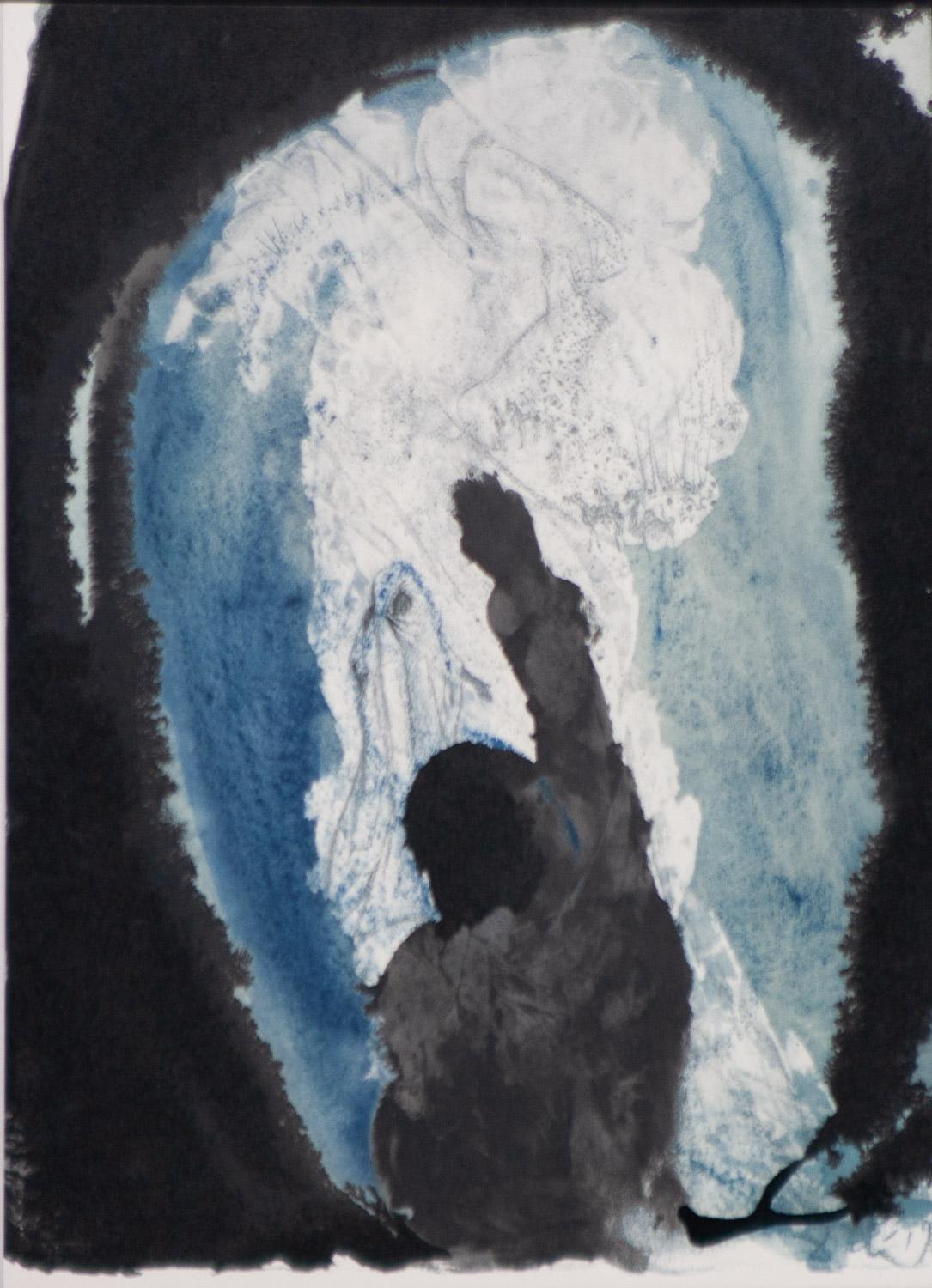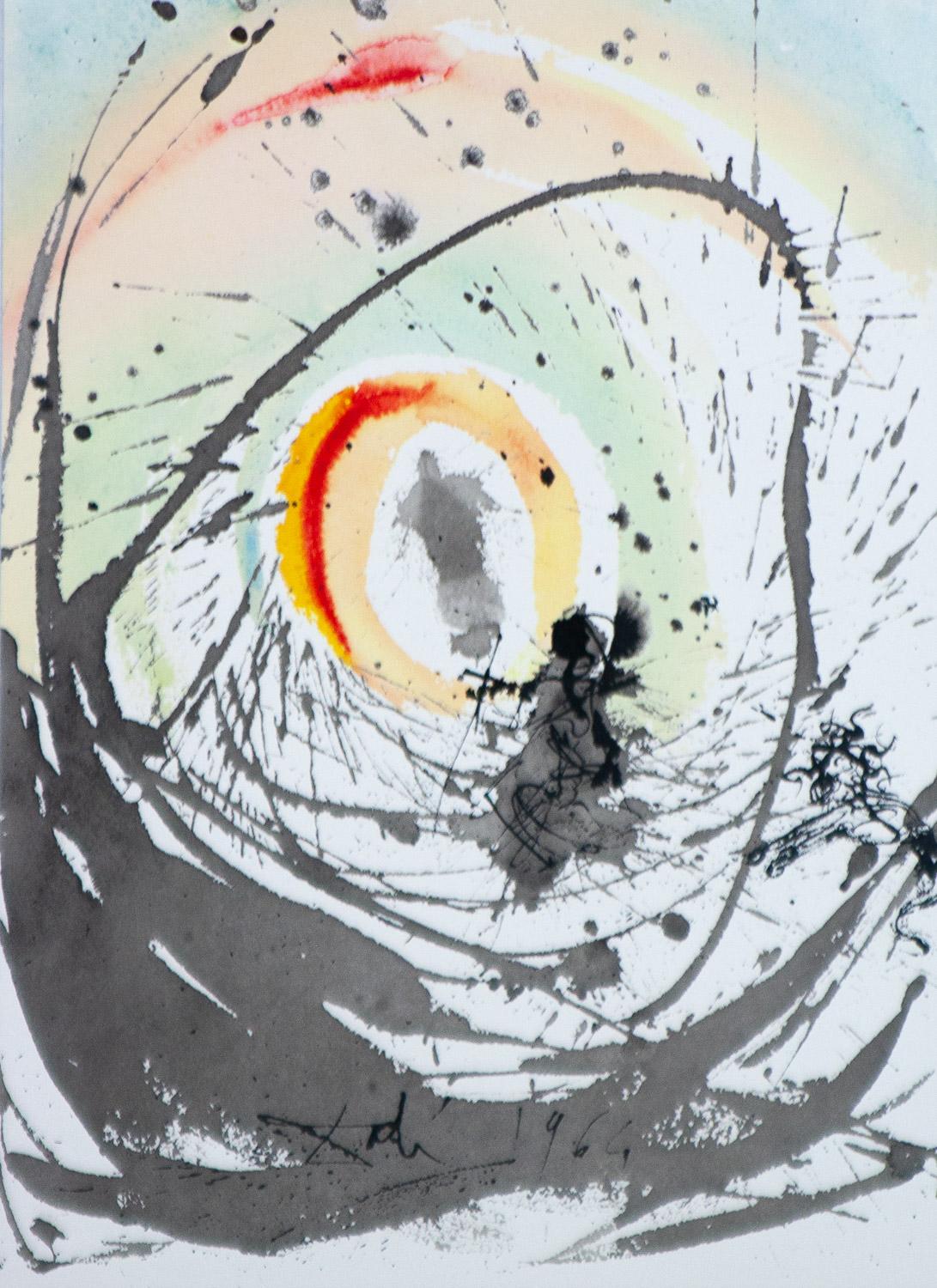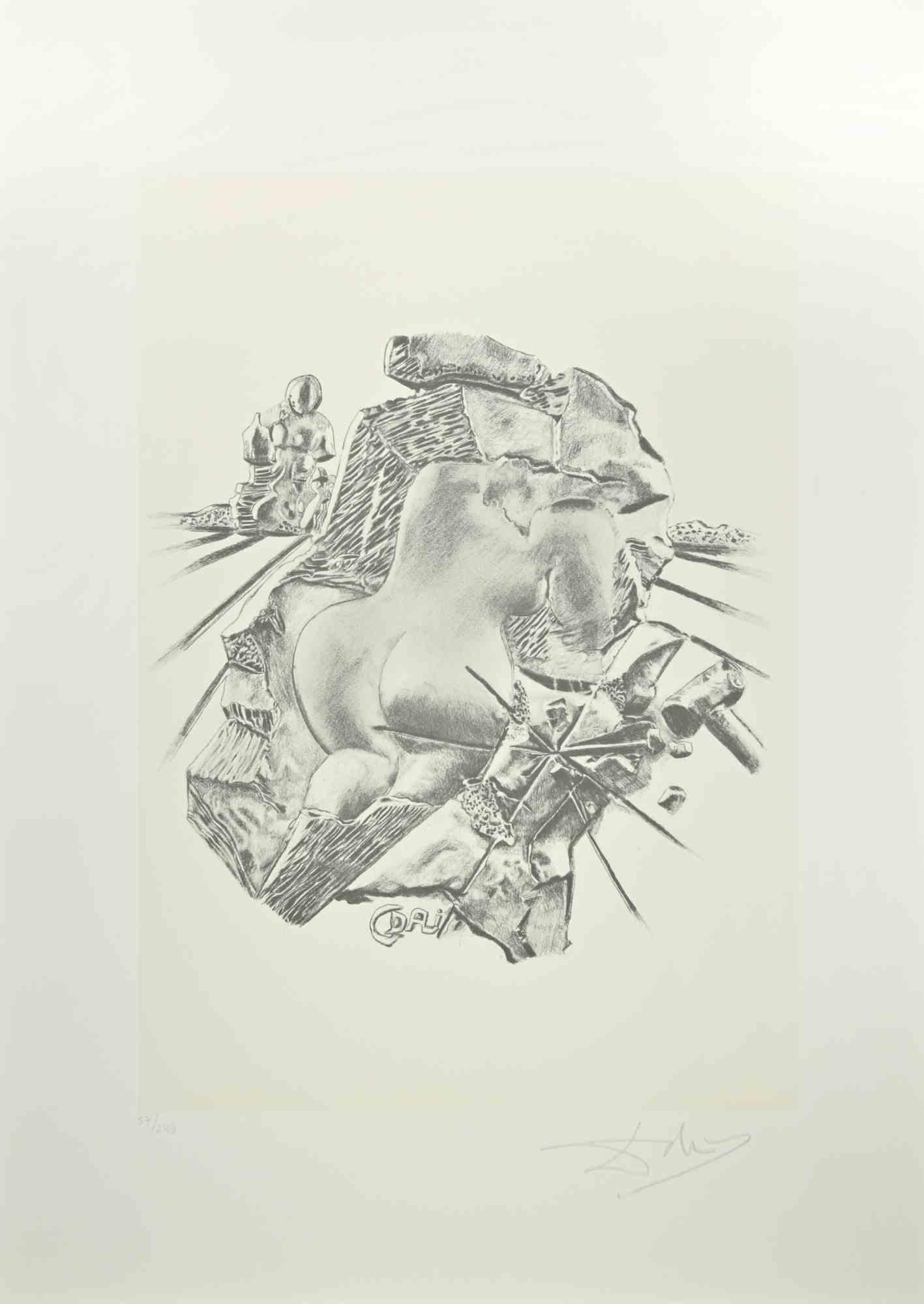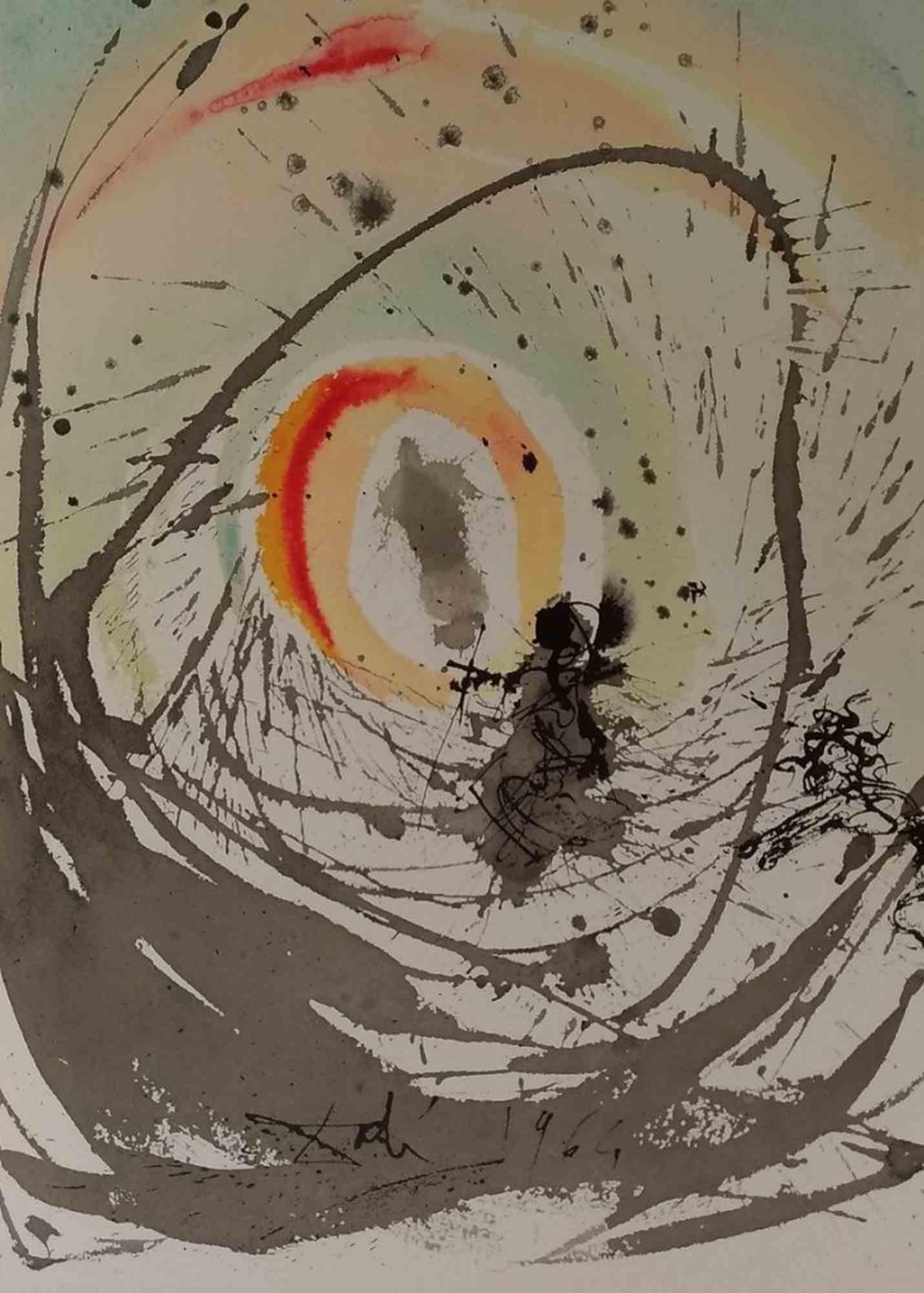Marc Chagall20th century color dark brown lithograph man and woman figures red yellow1960
1960
About the Item
- Creator:Marc Chagall (1887 - 1985, French)
- Creation Year:1960
- Dimensions:Height: 25.5 in (64.77 cm)Width: 21.5 in (54.61 cm)
- Medium:
- Movement & Style:
- Period:
- Condition:
- Gallery Location:Milwaukee, WI
- Reference Number:
Marc Chagall
Described by art critic Robert Hughes as "the quintessential Jewish artist of the twentieth century," the Russian-French modernist Marc Chagall worked in nearly every artistic medium. Influenced by Symbolism, Fauvism, Cubism and Surrealism, he developed his own distinctive style, combining avant-garde techniques and motifs with elements drawn from Eastern European Jewish folk art.
Born Moishe Segal in 1887, in Belarus (then part of the Russian empire), Chagall is often celebrated for his figurative paintings, but he also produced stained-glass windows for the cathedrals of Reims and Metz, in France; for the United Nations, in New York; and for the Hadassah Hospital in Jerusalem, as well as book illustrations, stage sets, ceramics, tapestries and fine-art prints. Characterized by a bold color palette and whimsical imagery, his works are often narrative, depicting small-village scenes and quotidian moments of peasant life, as in his late painting The Flight into Egypt from 1980.
Before World War I, Chagall traveled between St. Petersburg, Paris and Berlin. When the conflict broke out, he returned to Soviet-occupied Belarus, where he founded the Vitebsk Arts College before leaving again for Paris in 1922. He fled to the United States during World War II but in 1947 returned to France, where he spent the rest of his life. His peripatetic career left its mark on his style, which was distinctly international, incorporating elements from each of the cultures he experienced.
Marc Chagall remains one of the past century’s most respected talents — find his art on 1stDibs.
- ShippingRetrieving quote...Ships From: Milwaukee, WI
- Return PolicyA return for this item may be initiated within 14 days of delivery.
- 20th century color lithograph nude figuresBy Marc ChagallLocated in Milwaukee, WI"Adam et Ève et le Fruit Défendu (Adam and Eve and the Forbidden Fruit), M 235/258," is an original lithograph by Marc Chagall. This original color lithograph was designed for and pr...Category
1960s Surrealist Figurative Prints
MaterialsLithograph
- 20th century color lithograph dark brown reclined sleeping figures moonBy Marc ChagallLocated in Milwaukee, WI"Ruth aux Pieds de Booz (Ruth at the Feet of Boaz), M 248/271" is an original lithograph by Marc Chagall. This original color lithograph was designed ...Category
1960s Surrealist Figurative Prints
MaterialsLithograph
- "Venise en Fleurs" from "Je Reve, " Surrealist Lithograph signed by Andre MassonBy André MassonLocated in Milwaukee, WI"Venise en Fleurs" is an original color lithograph by Andre Masson. This piece is from the "Je Reve" (I Dream) portfolio of 1975. The edition number, written lower left, is H.C. XXV/...Category
1970s Surrealist Figurative Prints
MaterialsLithograph
- "A Multiple of Gaudy and Fantastic Appearances from Edgar Allen Poe..."By Federico CastellonLocated in Milwaukee, WI"A Multiple of Gaudy and Fantastic Appearances" from "Edgar Allen Poe's Mask of the Read Death" is an original lithograph by Frederico Castellon. The artist ...Category
1960s Surrealist Figurative Prints
MaterialsLithograph
- "Paradis (Paradise), M 232/255, " an Original Color Lithograph by Marc ChagallBy Marc ChagallLocated in Milwaukee, WI"Paradis (Paradise), M 232/255" is an original lithograph by Marc Chagall. his original color lithograph was designed for and printed by VERVE for the book “Dessins pour La Bible." I...Category
1960s Surrealist Figurative Prints
MaterialsLithograph
- "Le Visage d'Israël (The Face of Israel), M 231, " an Original Color LithographBy Marc ChagallLocated in Milwaukee, WI"Le Visage d'Israël (The Face of Israel), M 231," is an original lithograph by Marc Chagall. It was created as a part of "Verve, revue artistique et littéraire," Vol. X No 37-38. Thi...Category
1960s Surrealist Figurative Prints
MaterialsLithograph
- Nude - Original Lithograph by Sergio Barletta - 1970sBy Sergio BarlettaLocated in Roma, ITNude is an original lithograph realized by Sergio Barletta. With a poem written on the lower center in blue. Hand-signed on the lower right. Artist's proof. In very good condition...Category
1970s Surrealist Figurative Prints
MaterialsLithograph
- Magritte Portfolio V 20 lithographs- 20th Century, Surrealist, Figurative PrintBy (after) René MagritteLocated in Sint-Truiden, BEComplete set of 20 color lithographs in a beautiful burgundy board with ties, plate-signed by Magritte and numbered from the edition of 275. The lithograph features the dry stamps of the Magritte Foundation & ADAGP and is countersigned in pencil by Mr. Charly Herscovici, President of the Magritte Foundation, Chairman of the Magritte Museum and unique representative of the Magritte Succession. A proof of edition is printed on the back of the lithograph, guaranteeing its authenticity. Magritte was a Belgian surrealist artist whose witty and thought-provoking images challenged observers? preconditioned perceptions of reality. Magritte's work frequently displays a juxtaposition of ordinary objects in an unusual context, giving new meanings to familiar things.Magritte grew up in a simple and somewhat tragic household. His father was a modest tailor. His mother, who was mentally unsound, committed suicide in the year 1912. Magritte started drawing at a young age, and his first paintings, produced c. 1915, were Impressionistic in style.Magritte first worked as a draughtsman in a wallpaper factory and, in the year 1922, fell in love with and married Georgette Berger. In 1926, Magritte signed...Category
20th Century Surrealist Figurative Prints
MaterialsLithograph
- Jeremiah's Prophecy Against the King Joachim, 1967 by Salvador DaliBy Salvador DalíLocated in Paonia, COJeremiah's Prophecy Against the King Joachim, 1967 is a colored lithograph from the original gouache on heavy rag paper from Salvador Dali’s five volume Biblia Sacra Suite ...Category
1960s Surrealist Abstract Prints
MaterialsLithograph
- A Woman Clothed with the Sun, 1967 by Salvador Dali from Biblia SacraBy Salvador DalíLocated in Paonia, COA Woman Clothed with the Sun, 1967 is a colored lithograph from the original gouache on heavy rag paper from Salvador Dali’s five volume Biblia Sacra Suite published in Rome b...Category
1960s Surrealist Abstract Prints
MaterialsLithograph
- The Sculpture - Lithograph - 1980By Salvador DalíLocated in Roma, ITThe Sculpture is a lithograph realized in 1980, from the series The Arts. cm. 70x50. Signed in the lower right margin. Numbered on the lower left. Edition of 57/249. This artwork is from the serie “The Arts” composed by seven litographs derived from seven drawings made by Salvador Dalì...Category
1980s Surrealist Figurative Prints
MaterialsLithograph
- Mulier Amicta Sole - Lithograph - 1964By Salvador DalíLocated in Roma, ITMulier amicta sole ("A woman clothed with the Sun") is an artwork realized by Salvador Dalí in 1964. It is part of Biblia Sacra vulgatæ editionis published by Rizzoli-Mediolani betwe...Category
1960s Surrealist Figurative Prints
MaterialsLithograph





